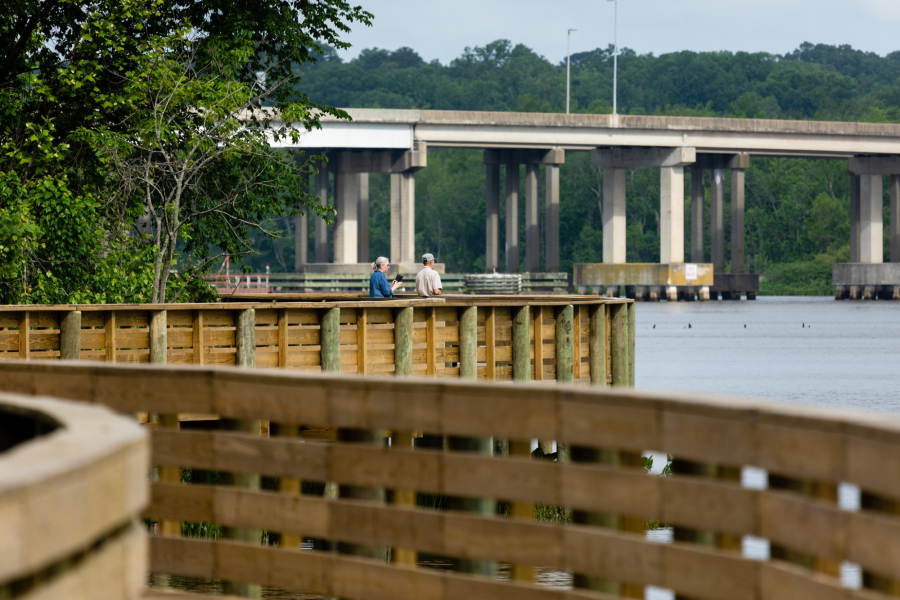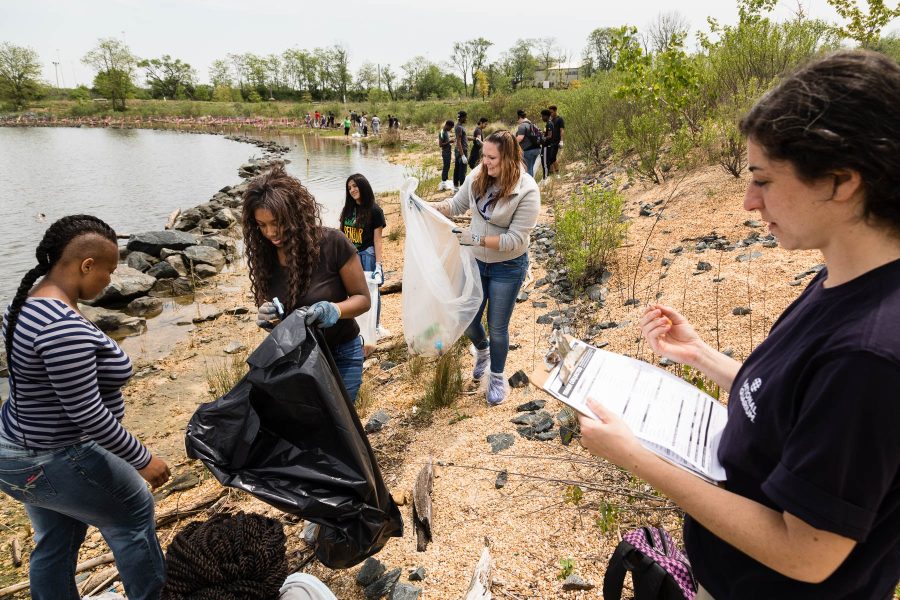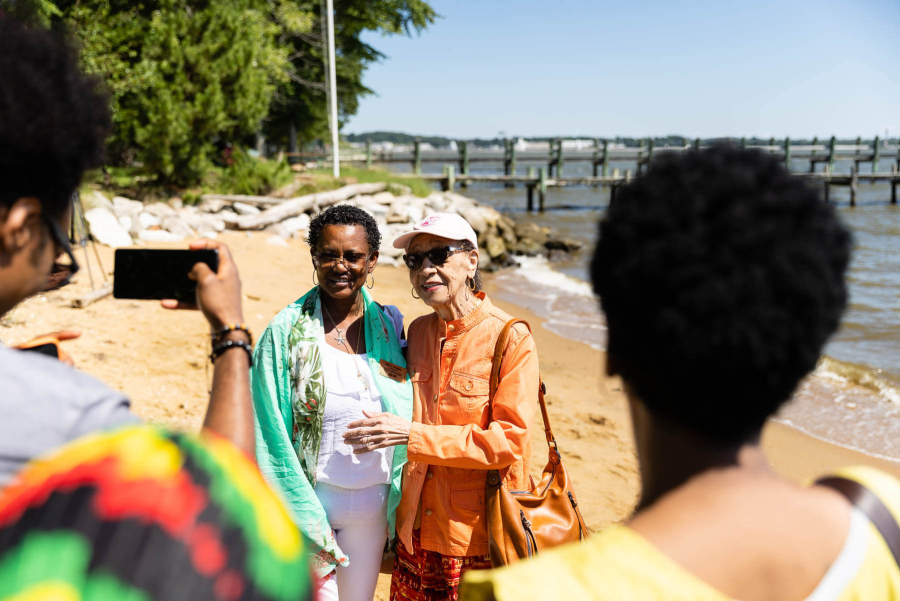For public access, being near the water might be more important than on the water
Report on waterfront recreation reveals valuable insights about how people spend time outdoors

There are over 100,000 streams, creeks and rivers that flow into the Chesapeake Bay, but accessing those waterways isn’t as easy as you might think.
At the Chesapeake Bay Program, our partners work to install docks, piers, boardwalks and other public access sites to make our rivers and the Bay itself more available to residents and visitors. Since 2010, various state and local agencies have added 248 of these sites across the Chesapeake watershed, and expect to reach their goal of 300 new sites by 2025. In total, there are about 1,387 access sites in the watershed.
In 2022, the workgroup coordinating this effort hired a contractor to conduct research around how people in the Bay watershed use existing public access sites, as well as the barriers that exist to getting on the water, particularly for underrepresented communities. Published in 2023, the report includes survey data from 2,263 randomly-selected adult residents of the watershed, with insights and recommendations drawn from the data.
Many prefer being near the water to being on the water
While residents largely enjoy having access to rivers and streams, it is often enough to just be near the water as opposed to being on the water. Survey results showed that 60% of residents sit and walk near the water at least occasionally, and about 30% engage in more active pursuits like biking, fishing and swimming. When asked to choose from a list of 20 possible features that “would most make you want to visit a public water access site,” residents focused on restrooms, trails, picnic areas and parking and opposed to docks, fishing areas and swimming areas. In the focus groups, which concentrated on less frequent visitors and underserved audiences, many said they wanted to be near, but not on or in, the water. They gravitated towards images of a picnic area where they could gather with family or friends, or a bench where they could sit by the water.
Investments in casual walking areas can be seen at sites like the Riverwalk in Hopewell, Virginia, a 1,700-foot boardwalk on the Appomattox River. In Pennsylvania, the Susquehanna River Walk follows the north and south shores of the Susquehanna River West Branch. The 4.2 mile trail is paved and is perfect for biking and walking.
Importance of Being Outside Experiencing Nature
Respondents were asked, "When you think about all the things you could be doing with your time, how important is it to you to spend time outside and experience nature?"
Not everyone feels welcome at parks
Survey results showed that while 69% of residents agree with the statement, “I always feel welcome in parks and other public spaces around here,” that number was about 15 percentage points higher among White residents compared to Black, Hispanic or Asian residents. Younger residents (under age 25) and lower-income residents are also much less likely than older or more affluent residents to feel welcome in these spaces.
Since 2019, Sandy Point State Park in Annapolis, Maryland has had two bilingual park rangers who provide translation services and develop programming to better engage the park’s largely Spanish speaking visitors. The Bilingual Ranger program now includes multiple bilingual outreach positions based at several state parks in Maryland.

Access to the water inspires people to protect it
Survey results affirmed the idea that spending more time near the water increases your desire to protect it. Of the residents who visit a public access site at least once a week, 45% strongly agreed with the statement “I want to do more to help make local creeks, rivers and lakes healthier,” and 21% somewhat agreed. For those who visit a public access site only a few times a year, 20% strongly agreed with the statement and 45% somewhat agreed.
Sixty-one percent of respondents agreed that “Being near or on the water makes me want to do more things to protect it.” That number also jumped significantly higher among people who visit the water frequently.
In urban areas where access to the water is limited, organizations like the Anacostia Watershed Society host boat tours for students and residents that leave from various parks and public access sites. The organization also hosts recreational events through their Anacostia River Discovery Series, with the ultimate goal of inspiring community members to become active stewards of the waterway.

A majority of residents feel happier when they’re on the water
Despite varying experiences and interests, a majority of people get satisfaction from visiting public access sites. In the survey, 54% of respondents said that it is very or somewhat important to spend time outside experiencing nature. Sixty-eight percent of respondents also said that “being near or on the water makes me feel happier.” About half of residents (49%) said that having convenient access to the water for outdoor activities is very or somewhat important to them.
The mental health benefits of being outdoors is just one of the reasons why jurisdictions in the Chesapeake Bay watershed establish new ways to get on the water and experience nature. The historic Elknotia-Carr’s beach was officially opened to the public in 2022 and will host its first Juneteenth celebration this year. The waterfront park was a segregated beach for African American families from the 1930’s-1970’s and featured numerous big-named musicians of the time.
Importance of Having Convenient Access to Water
Respondents were asked, "How important is it to you to have convenient access to the water for any of the outdoor activities mentioned?"
Improving the public access sites
Based on survey responses, the report provided four high-level recommendations for improving public access sites. This included prioritizing investments in infrastructure (such as benches, trails and picnic tables), experimenting with education and engagement (such as outreach to communities and guides onsite), extending a sense of welcome and belonging (such as by hiring staff who reflect the characteristics of the community or integrating community art) and gaining an understanding of who is visiting and not visiting the parking (such as by surveying visitors or developing visitor personas).
To find a site near you to get on, or near the water, in the Chesapeake Bay watershed, visit our Public Access Sites webpage.

Comments
There are no comments.
Thank you!
Your comment has been received. Before it can be published, the comment will be reviewed by our team to ensure it adheres with our rules of engagement.
Back to recent stories